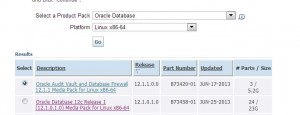ORA-17628: Oracle error 19505 returned by remote Oracle server 1
Today I was doing a procedure for duplicating databases at a client environment. One error that pop up time to time was the one below:
RMAN-00571: =========================================================== RMAN-00569: =============== ERROR MESSAGE STACK FOLLOWS =============== RMAN-00571: =========================================================== RMAN-03002: failure of Duplicate Db command at 05/13/2014 18:49:01 RMAN-05501: aborting duplication of target database RMAN-03015: error occurred in stored script Memory Script RMAN-03009: failure of backup command on t1 channel at 05/13/2014 18:49:00 ORA-17628: Oracle error 19505 returned by remote Oracle server
At several websites you can see different causes:
– Control file location specification was wrong;
– db_file_name_convert were not specified;
– FRA diskgroup inexisting in the target;
– etc.
I had the following two cases on my experiments:
– destination database directory not existing on the DGDATA diskgroup (+DGDATA/<db_unique_name>)
– I did not connect to auxiliary using a standard network naming (I was using ezconnect).

